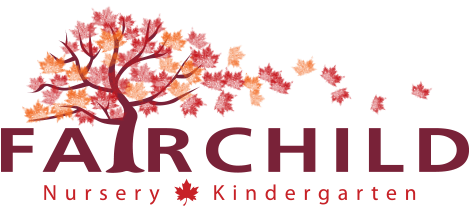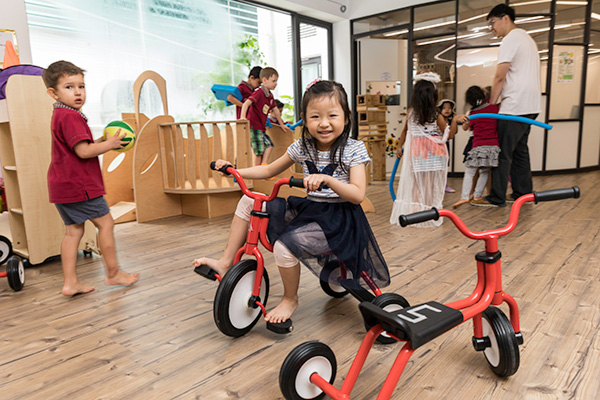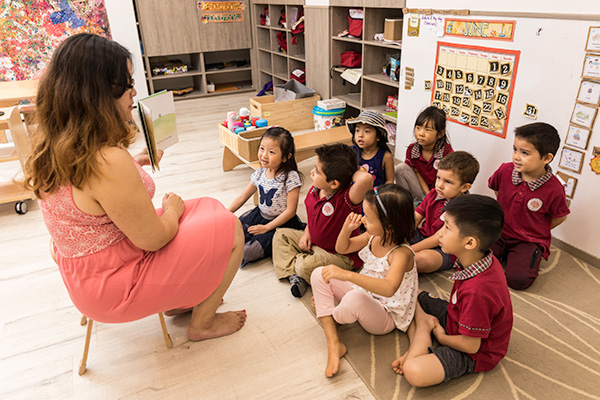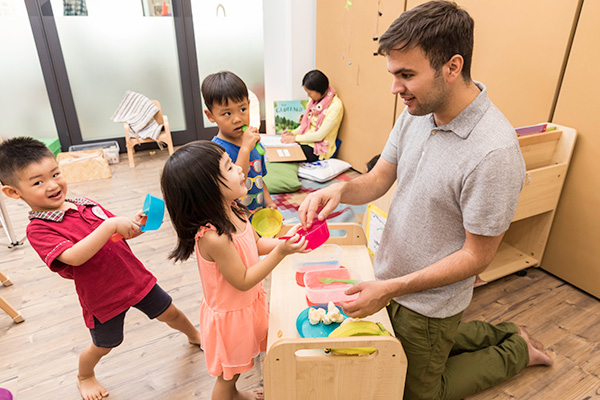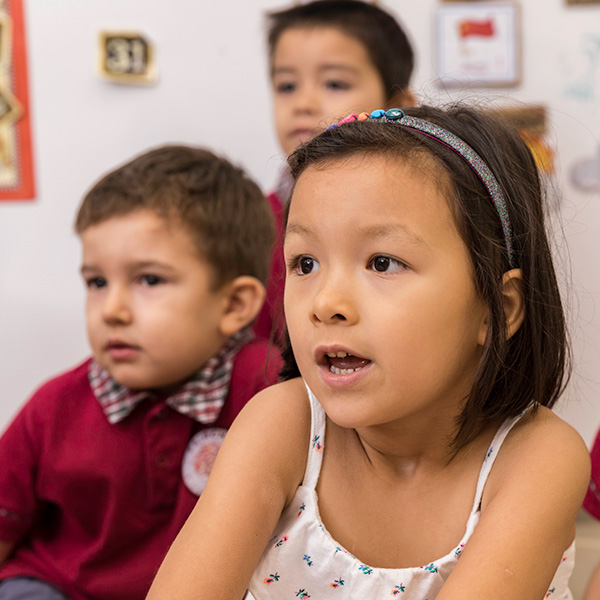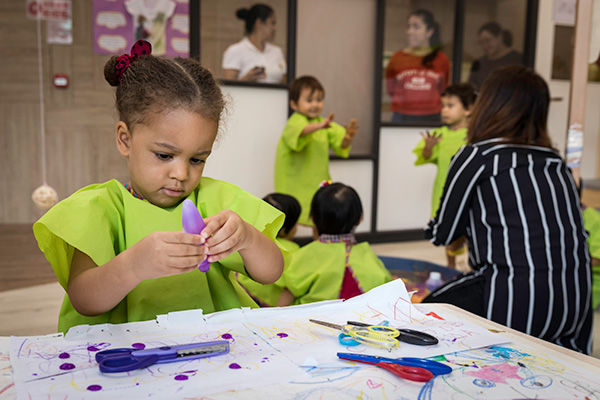Children are communicatorsCommunication is a process; a way of discovering things, asking questions, using language as play, playing with sounds rhythm and rhyme. Children are encouraged to use language to investigate and explore, to reflect on their experiences. They are listened to with respect, believing that their questions and observations are an opportunity to learn and search together. It is a continual, and collaborative process. Rather than the child asking a question and the adult offering the answers, the search is undertaken together.
The classroom environment is recognised for its potential to inspire children. It is considered the third teacher next to adults (parents & teachers) and the other childrenThe environment is filled with natural light, order and beauty. It is an open space, free from clutter where every material is considered for its purpose, and every corner evolves to encourage children to delve deeper and deeper into their interests. The space encourages collaboration, communication and exploration while respecting the capability of children by providing them with authentic materials and tools. The space is cared for by the children and the adults.
The adult is a mentor and guide, learning with the childOur role as adults is to observe our children, listen to their questions and their stories, find what interests them and then provide them with opportunities to explore these interests further. The projects emerge based on the child’s interests.
An emphasis on documenting children’s thoughtsIn Reggio-inspired settings, there is an emphasis on carefully displaying and documenting children’s thoughts and progression of thinking. Teachers make the learning visible in many different ways: photographs, transcripts and explanations, drawings, posters, videos, etc. All is designed to show the child’s learning process.
The ‘Hundred Languages’ of ChildrenThe Reggio Emilia approach emphasizes hands-on discovery learning that allows the child to use all their senses and all their ‘languages’ to learn. Children express their learning in many different ways (the hundred languages of children) which demonstrate their understanding. They express their thoughts and creativity through drawing, sculpting, dance and movement, painting and pretend play, modelling and music, and each one of these hundred languages is valued and nurtured. These languages or ways of learning are all a part of the child. Learning and play are not separated.
Information sourced from:
www.reggiochildren.it/identita/reggio-emilia-approach
www.reggioalliance.org
www.education.com/magazine/article/Reggio_Emilia
https://education.gov.scot/improvement/documents/elc/elc35_reggioemilia/elc35_reggioaug06.pdf
